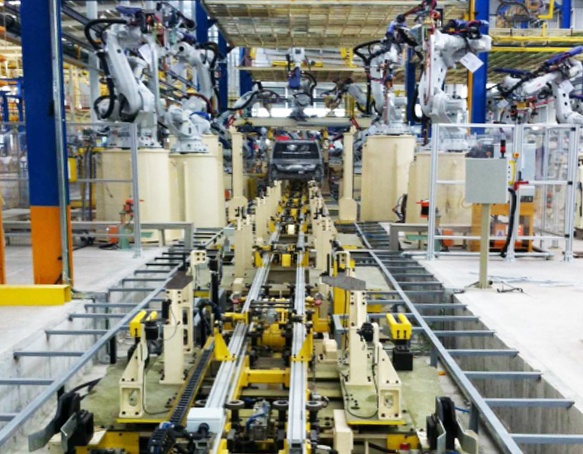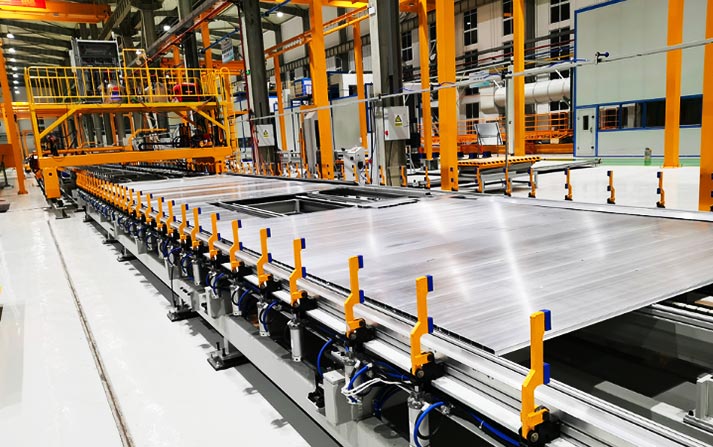+86 15633683072
Automated pipe welder is an advanced equipment used for efficient pipe welding in modern industry. According to different welding requirements, its specifications and models are diverse and suitable for a variety of industrial scenarios. The following is a detailed analysis of common specifications and models and their applicable scenarios:
(1) TIG (Tungsten Inert Gas Welding) automated pipe welder
Features: High welding accuracy, suitable for thin-walled pipe welding, beautiful weld shape, no spatter.
Applicable scenarios: Stainless steel pipe welding in the chemical and pharmaceutical industries; Pipe welding with high hygiene requirements in the food processing industry.
(2) MIG/MAG (Metallic Arc Welding) automated pipe welder
Features: Fast welding speed, suitable for medium and thick-walled pipe welding, high deposition rate.
Applicable scenarios: Oil and gas pipeline welding; Pipe welding in engineering machinery and shipbuilding.
(3) SAW (Submerged Arc Welding) automated pipe welder
Features: Suitable for large-diameter thick-walled pipes, high welding efficiency, and large welding penetration.
Applicable scenarios: welding of long-distance oil pipelines and natural gas pipelines; welding of high-pressure pipelines in the power industry.
(1) Small diameter orbital welder machine
Features: usually suitable for small diameter pipelines with a diameter of 25mm to 150mm, flexible operation and high welding accuracy.
Applicable scenarios: small diameter welding in medical equipment; precision pipeline welding in the instrumentation industry.
(2) Medium diameter orbital welder machine
Features: suitable for pipelines with a diameter of 150mm to 600mm, commonly used in industrial pipelines.
Applicable scenarios: welding of urban water supply and gas supply pipelines; welding of reaction device connection pipelines in the chemical industry.
(3) Large diameter orbital welder machine
Features: suitable for large diameter pipelines with a diameter of more than 600mm, stable structure and high welding efficiency.
Applicable scenarios: welding of oil and gas pipelines; welding of main engine exhaust pipes in the shipbuilding industry.
(1) Horizontal pipeline automatic welding machine
Features: suitable for horizontal pipeline welding, simple structure and easy operation.
Applicable scenarios: batch pipe welding on factory assembly lines; medium and short distance industrial pipe connection.
(2) Portable automatic pipe welding machine
Features: small size, light weight, easy to operate on site.
Applicable scenarios: on-site installed pipe welding, such as water supply pipes in construction; field oil and gas pipeline welding.
(1) All-position automatic welding machine
Features: can complete welding in various positions such as horizontal, vertical, and overhead welding.
Applicable scenarios: complex pipe welding in narrow spaces or special angles; high-demand welding in the nuclear industry or shipbuilding industry.
(2) Automatic welding machine with cooling system
Features: suitable for high temperature environment and ensure welding stability.
Applicable scenarios: high temperature pipe welding in refineries and chemical plants.
Automatic pipe welding machines come in a variety of specifications and models, each designed for specific industrial needs and application scenarios. When purchasing equipment, companies should choose the most suitable model based on factors such as specific pipe diameter, welding requirements, construction environment, and budget, so as to maximize welding efficiency and quality while reducing costs.
 Automobile Body Production Line Welding Fixtures
Automobile Body Production Line Welding Fixtures  Automotive Body Welding Automated Manufacturing Solutions
Automotive Body Welding Automated Manufacturing Solutions  Bulldozer beam and bucket robot welding cobot assembly line
Bulldozer beam and bucket robot welding cobot assembly line  Suspension parts of semi-trailer fully automated production line
Suspension parts of semi-trailer fully automated production line  Aluminum alloy container side box robot automated welding manufacturing line automation
Aluminum alloy container side box robot automated welding manufacturing line automation Zhengzhou Kehui Technology Co., Ltd
Email: info@zzkehui.com